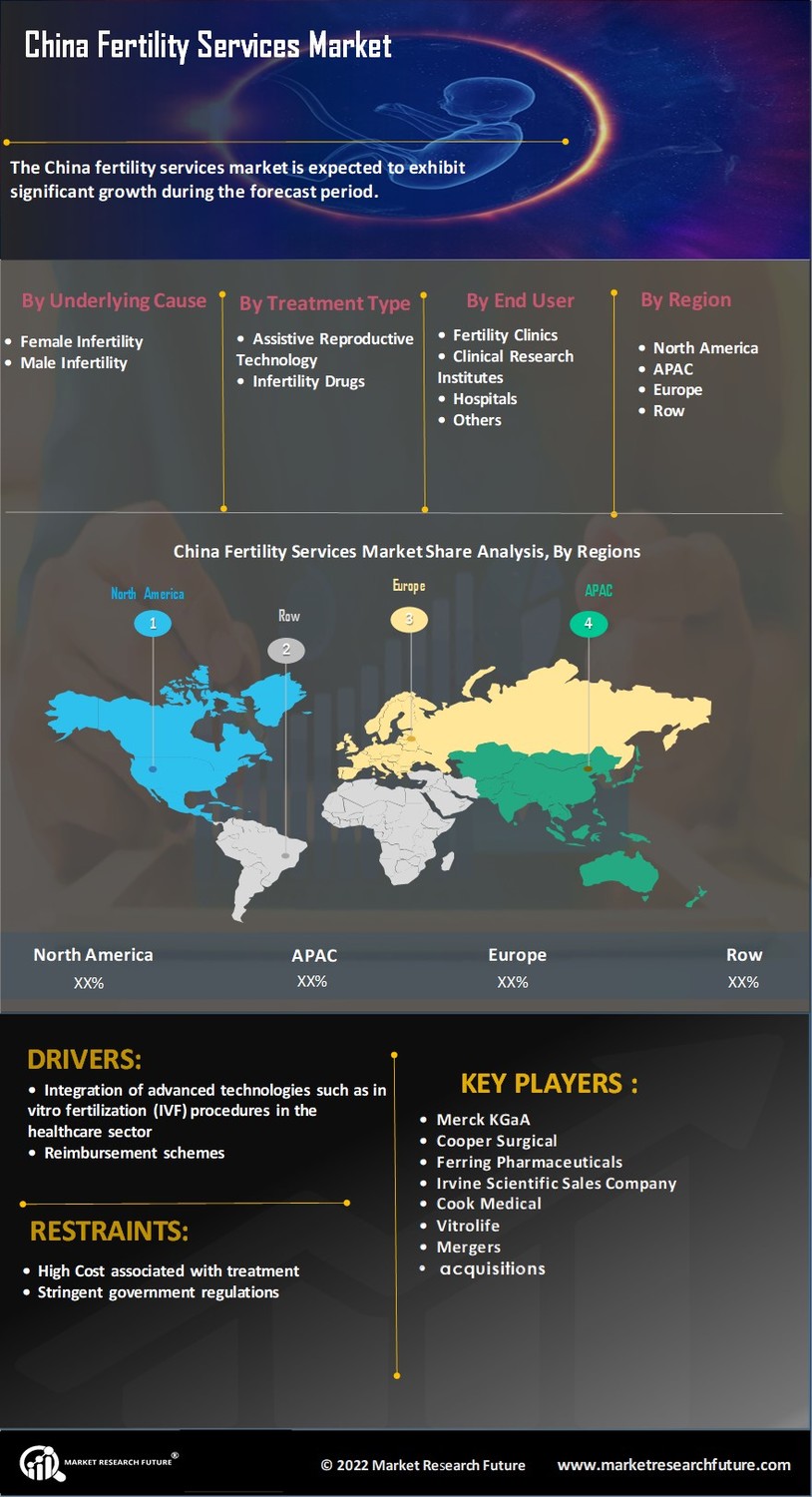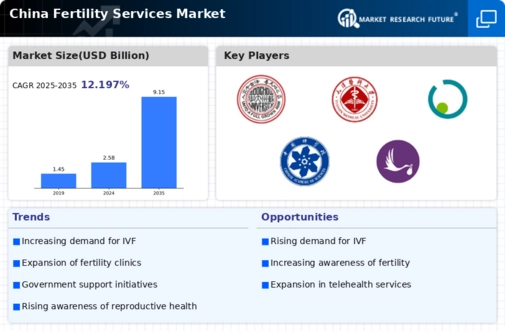The fertility services market in China is characterized by a dynamic competitive landscape, driven by increasing demand for assisted reproductive technologies (ART) and a growing awareness of fertility issues among the population. Key players are actively positioning themselves through innovation, strategic partnerships, and regional expansions. Notably, companies such as IVF Australia (AU), CCRM Fertility (US), and Fertility Associates (NZ) are leveraging their expertise to enhance service offerings and improve patient outcomes. Their collective strategies not only foster competition but also contribute to the overall growth of the market, as they adapt to the evolving needs of consumers seeking fertility solutions.
In terms of business tactics, companies are increasingly localizing their operations to better serve the Chinese market, optimizing supply chains to ensure efficiency and reliability. The competitive structure of the market appears moderately fragmented, with several players vying for market share. This fragmentation allows for diverse service offerings, yet the influence of major players remains significant, as they set benchmarks for quality and innovation that smaller entities strive to meet.
In October 2025, CCRM Fertility (US) announced a partnership with a leading Chinese healthcare provider to expand its reach in the region. This strategic move is likely to enhance CCRM's operational capabilities and provide access to a broader patient base, thereby solidifying its position in the market. The collaboration may also facilitate knowledge transfer and best practices in ART, which could elevate service standards across the board.
In September 2025, IVF Australia (AU) launched a new telehealth platform aimed at improving patient access to fertility consultations. This initiative reflects a growing trend towards digital transformation in healthcare, particularly in fertility services, where convenience and accessibility are paramount. By integrating technology into its service model, IVF Australia is likely to enhance patient engagement and streamline the consultation process, potentially leading to higher conversion rates for treatment.
In November 2025, Fertility Associates (NZ) unveiled a new research initiative focused on genetic screening technologies. This development underscores the increasing importance of personalized medicine in fertility treatments. By investing in cutting-edge research, Fertility Associates aims to differentiate itself in a competitive market, potentially leading to improved success rates and patient satisfaction.
As of November 2025, current trends in the fertility services market are heavily influenced by digitalization, sustainability, and the integration of artificial intelligence (AI) into treatment protocols. Strategic alliances are becoming more prevalent, as companies recognize the value of collaboration in enhancing service delivery and innovation. Looking ahead, competitive differentiation is expected to shift from price-based strategies to a focus on technological advancements, innovative treatment options, and robust supply chain management, ultimately shaping a more resilient and responsive market.

















Leave a Comment